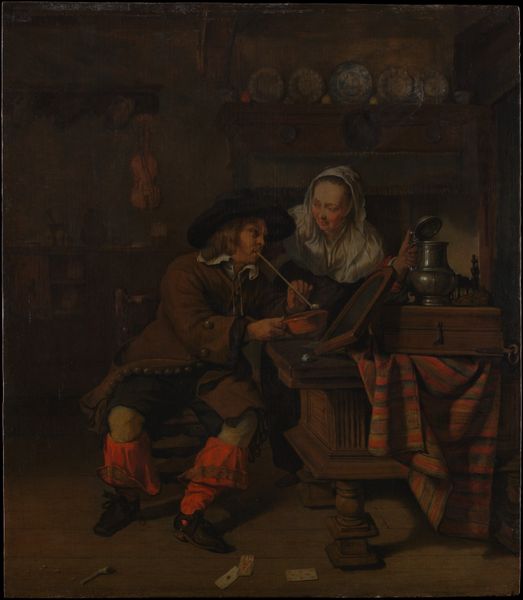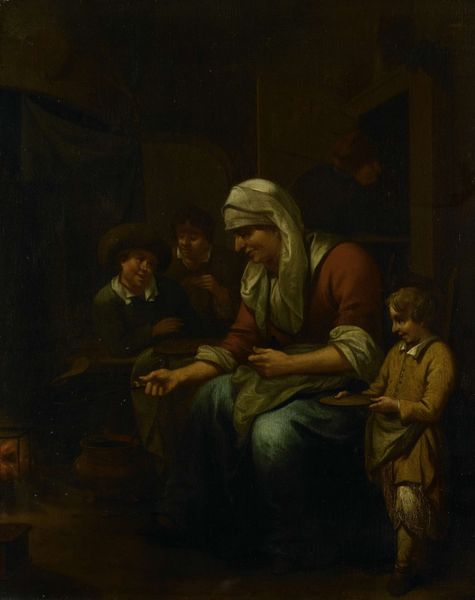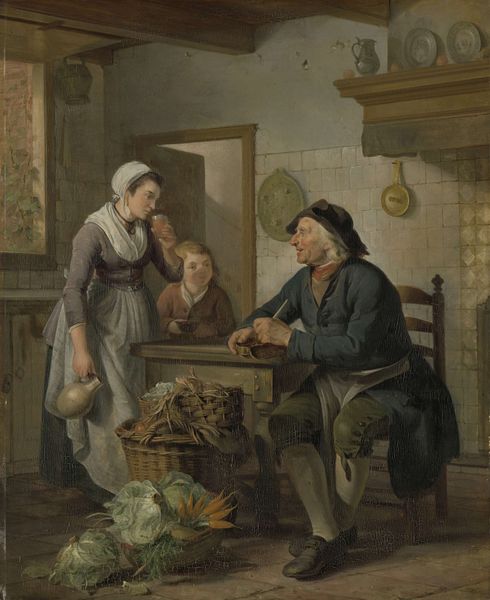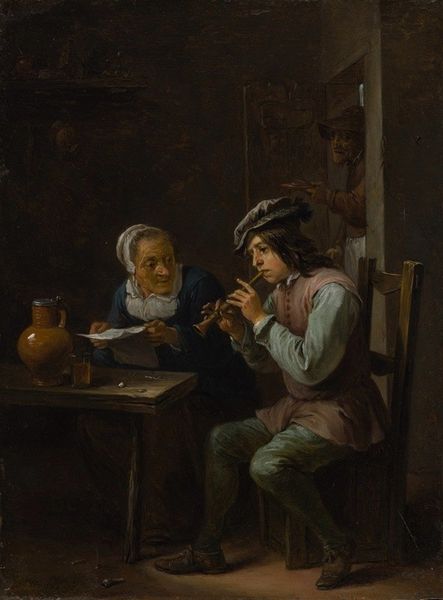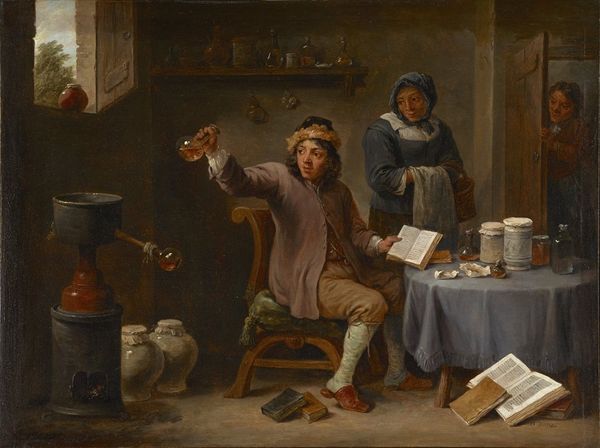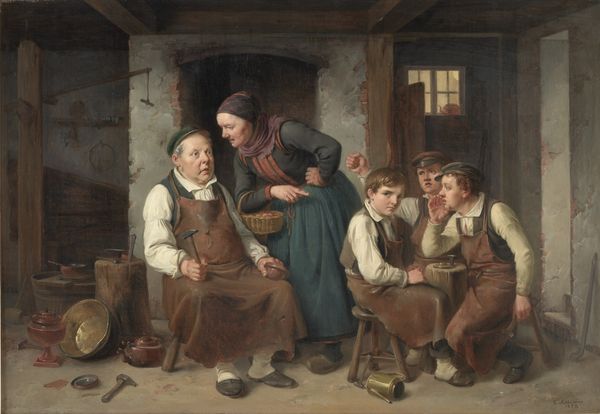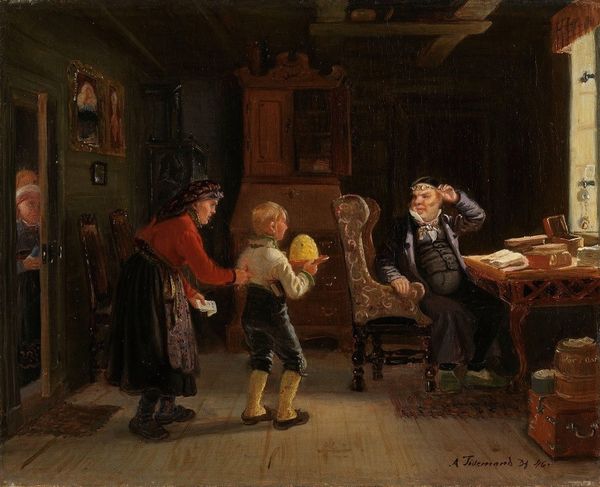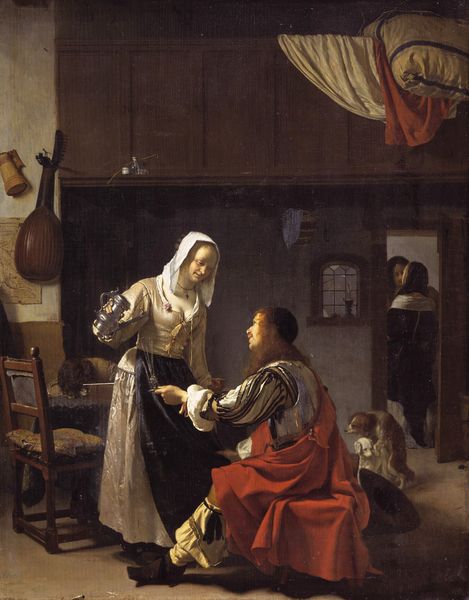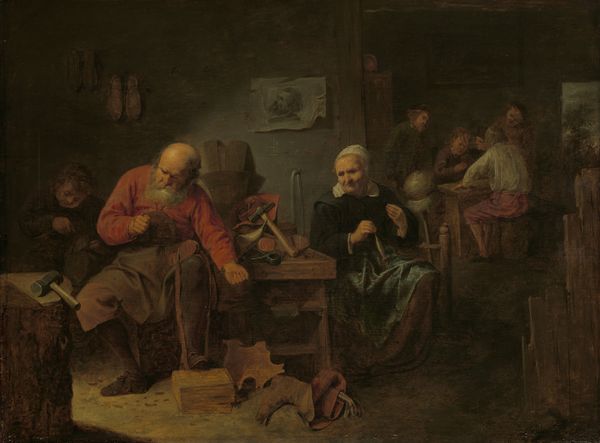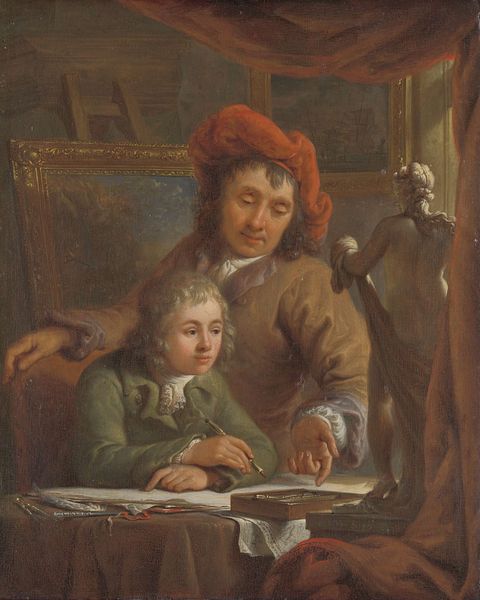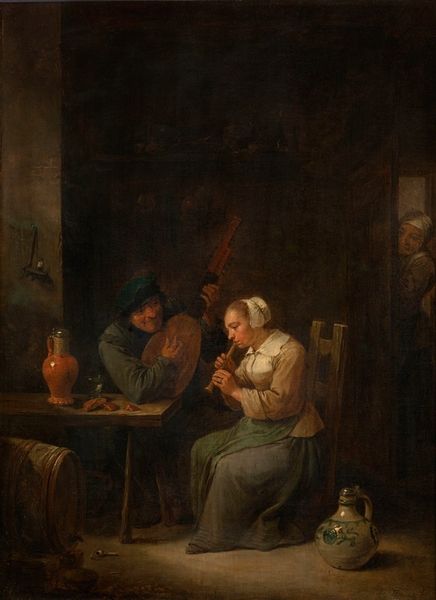
Dimensions: 26 cm (height) x 19.5 cm (width) (Netto)
Editor: So, here we have Peter Cramer’s "A Peasant Giving his Son Something to Drink," created in 1781, using oil on wood. It strikes me as an intimate scene, almost a glimpse into a private moment. What can you tell me about how to interpret this work? Curator: This image offers a portal into 18th-century social dynamics. Think about the term “genre painting." It’s a window into the everyday lives of people often overlooked by history. What does it tell us about the relationship between father and son within this particular socio-economic bracket? How does the act of sharing a drink function as a social and perhaps even political act, given the period? Editor: Political? I guess I was seeing it more as… well, just a nice little moment between a father and son. Is there more to it than that? Curator: Absolutely. Consider the context. Who gets represented in art, and how? Images of peasants gained popularity during a time when notions of national identity and social order were being negotiated. Are we seeing a romanticization, a critique, or simply a neutral observation? Ask yourself, what does it mean to depict the 'common man' at a time when societal hierarchies were incredibly rigid? Think of the pre-revolutionary fervor brewing during that time in places like France; how might images like these have fueled debates about social equality and the value of labor? Editor: That gives me a lot to think about. So it’s not just about what's in the painting, but also about why the painting exists at all, and what conversations it might have been part of at the time? Curator: Precisely. It's about understanding art as an active participant in the shaping of cultural values and power structures. Now, how does this change your view of the "intimate scene?" Editor: It definitely adds layers that I hadn't considered. I’ll never look at a genre painting the same way again!
Comments
No comments
Be the first to comment and join the conversation on the ultimate creative platform.
